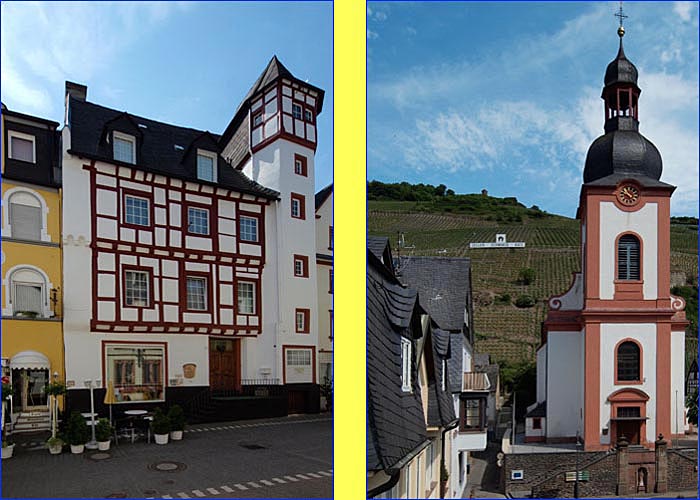
|

|

|

|
Zell on the MoselThe Mosel valley is mostly open to the southwest and protected on the north and east. It also lies protected from the rain by the Eifel and the Hunsrück. This gives it a special climate where frosts in spring (late frosts) or in the autumn (early frosts) are very rare. In other words, it is an ideal climate for Riesling, the grape needing the longest growing season, and having the highest quality. Archaeological finds have proven that the Celtic Treverians already grew grapes for wine in this region. The actual development of Mosel wine began with a decree by the Roman Emperor Probus (278-280 AD) which allowed for its general cultivation. A good climate is not the only thing necessary for good wine. Soil also plays a decisive role. After the widening of the Trier valley, with its colorful and steep sandstone sides, the Mosel starts cutting deeply through the Rhenish slate mountains and meandering with extreme twists and turns ("Central Mosel"). The deep Kasten valley in the central Mosel area with its blue-green Hunsrück slate is characterized by its steep bulging and gentle "slip-off" slopes making it ideal for viticulture. Photo: The long, well-preserved old town of Zell is grouped on both sides of Schloß- and Balduinstraße with the Zell castle and medieval houses worth seeing. At the Lindenplatz with the pedestrian bridge stands the church St. Petrus, behind which you can see the famous vineyard "Zeller Schwarze Katz". |
|

|
|
|
| [ Mail to Webmaster ] info@maasberg.ch |